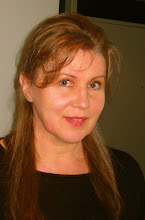THE RECONNECTION ............................................................... Axiatonal Lines, String Theory, Strands, Vibration, Meridian, Magnetic Grid, DNA
Axiatonal Lines – acupuncture meridian lines - connect to the planetary energy grid, and the entire Universe, not confined to space time, open-ended, accumulate energy from extra dimensional realities - they are vibratory lines.
Bandwidth – range of frequencies within a radiation band required to transmit a particular signal.
Ch’i – the activating energy of the Universe, bridge between body and consciousness, holds organs, glands, blood vessels, and other bodily parts in place.
DNA – deoxyribonucleic acid, a nucleic acid, which is a substance in the nucleus of a cell. DNA is shaped like a double helix (a ladder twisted into a spiral); common thinking says that humans contain two strands of DNA.
Quantum physicians have theorized that we may, in fact, have originally had as many as 12 or more, the implication is that rather than continuing to evolve forward in a near linear fashion, the human race will benefit by simultaneously reaching back in time and bringing forward certain aspects from when we were a more complete people.
Frequency – number of periodic oscillations, vibrations, or waves per unit of time (hertz).
Magnetic Grid – magnetic system of the Earth, sometimes known as ley lines that link the planet, referred to as the DNA delivery engine.
Meridians – in Chinese acupuncture, there are 12 main meridians or pathways along which positive and negative energy travels in the human body, and which carries on some of the communication between the various parts of human beings. Ch’i energy enters the body specific acupuncture points that have unique electro-magnetic characteristics.
Quantum Physics or mechanics – branch of science that deals with discrete, indivisible units of energy called quanta; the physics of the incredibly small, how electrons surround the nucleus of the atom and other subatomic actions.
Registers – involuntary physical or physiological responses to the frequencies - rapid eye movement, breathing changes, swallowing, tears, laughter, finger movements, head rotation, body movements, and stomach gurgling, to name a few.
Strings – simultaneously occurring parallel planes of existence.
String Theory is a way of looking at the building blocks of matter and energy, the most fundamental particles in the universe have been described as loops of “string” that vibrate at specific frequencies.
Strands – science has taught that in every DNA molecule in the human body, there are two strands—the basis of our genetic code or blueprint.
Vibration – oscillation of an object, everything in the universe vibrates at different frequencies.

